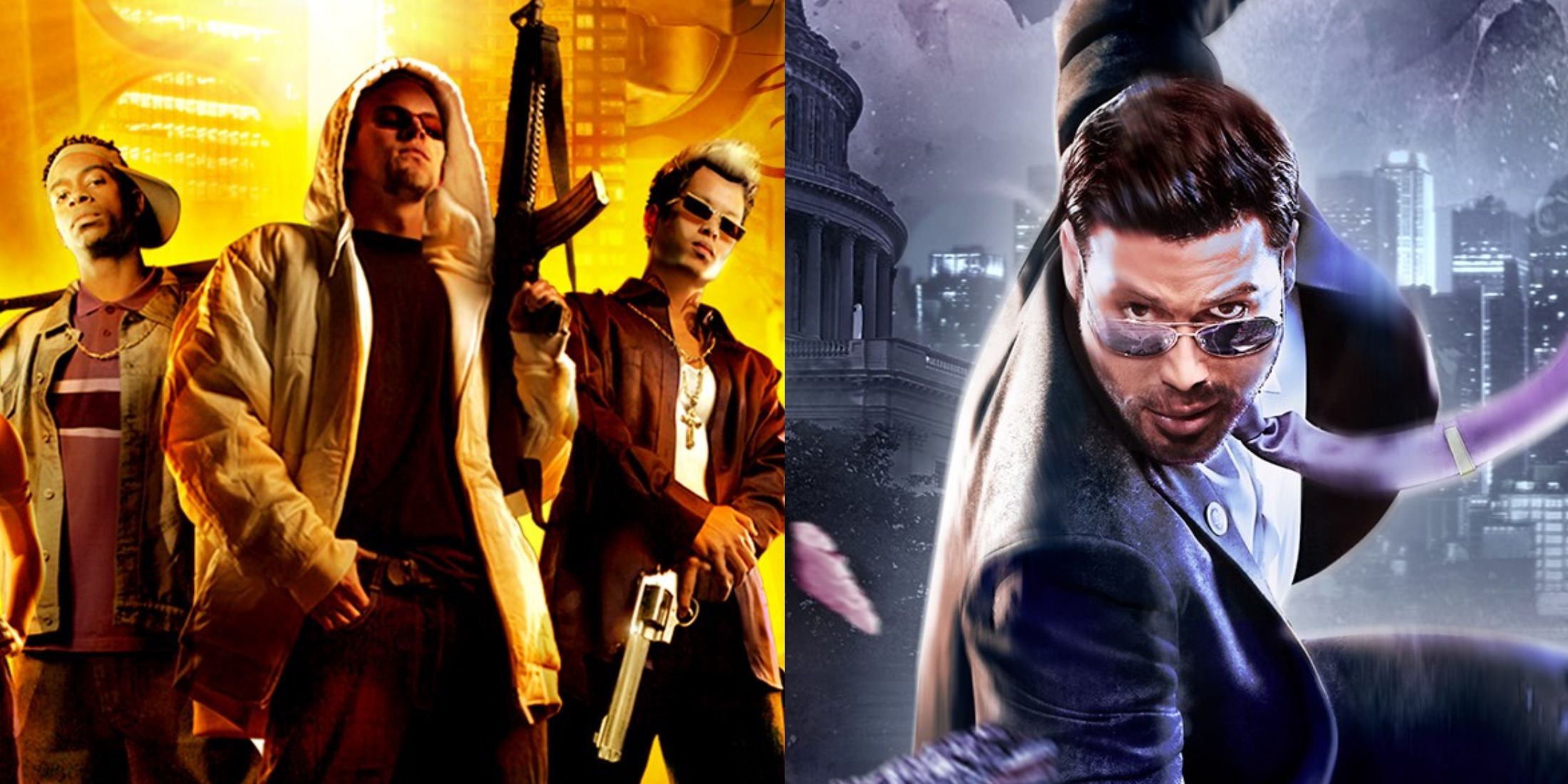
When Saints Row first launched, it was seen by gamers and critics as just one of a growing genre of games called “GTA clones,” or games that took heavy inspiration from the Grand Theft Auto series. However, as the series has progressed, it’s separated itself from the games that inspired it, to the point where most fans of both franchises would no longer describe the game as being similar to GTA except in incidental ways.
Both Saints Row and Grand Theft Auto are open-world crime games that satirize American urban lives and the glamorization of criminal behavior. It’s very obvious that one took inspiration from the other to the extent that most reviews of the first Saints Row game mention Grand Theft Auto. However, Saints Row’s developers have continuously pushed the game farther from its roots by taking inspiration from different sources, as Saints Row has become far weirder and chaotic than GTA. While Saints Row is still an open-world crime game, the most recent entries in the series have changed the story, characters, setting, and aesthetic to the point where even the most casual player would never mistake a Saints Row game for a Grand Theft Auto game.
Saints Row debuted in 2006 exclusively on the Xbox 360 to a warm, if not enthusiastic reception. Almost every review of the game compared it, both favorably and unfavorably, to GTA. IGN called Saints Row’s gameplay “just like GTA in most respects,” while Gamespot called it “almost criminally similar to GTA on first impression.” Despite that, there were hints even then that the developers were subverting that same formula. For example, the main character spent most of the game as a silent protagonist, like GTA 3’s Claude, but they would speak at specific parts of the story - meaning, they could speak but were choosing not to in order to fit in better with the rest of the Saints.

When Saints Row 2 launched, some changes in its style immediately became apparent. For starters, people could play as a customizable character, unlike most GTA games (barring Online). This was also the gang that introduced the Boss’s Homies, in-game allies with no analogous GTA characters, like Pierce and Shaundi (who, unfortunately, won’t be appearing in the Saints Row reboot). The enemies went from being simply rival gangs to Yakuza thugs, monster truck enthusiasts, and voodoo-practicing drug dealers.
By the time Saints Row The Third was released, it was plain that the game had thoroughly shed its GTA-clone roots and was on its own path. Ditching the framing narrative of street-level gang violence and urban crime, it instead told a story about the Saints, who have sold out to the point they’re household names, taking on the military-industrial complex. While Grand Theft Auto was at that time (and still is) more of a drama with comedic elements, Saints Row fully became a comedy series with Saints Row The Third. Then Saints Row IV came out, its wild story and high-flying superhero action were unlike anything Grand Theft Auto had ever tried.
If one views the games in terms of what inspired them, then both began as series that took inspiration from classic crime films and shows like Heat, Goodfellas, and Scarface. Grand Theft Auto is inspired by those films and others, with GTA V having shout-outs to The Wire, Breaking Bad, and The Sopranos. Saints Row IV, on the other hand, takes inspiration from such disparate properties as The West Wing, The Matrix, and even superhero movies.
Today, Saints Row's reputation is more about open-world chaos and parodies of modern pop culture, while Grand Theft Auto has remained a somewhat more grounded crime series that satirizes urban decay. With the Saints Row reboot on its way and aiming for younger characters and a more modern story, it’s unlikely anyone would confuse it with Grand Theft Auto anymore.
from ScreenRant - Feed https://ift.tt/2VqKyDX


0 Comments